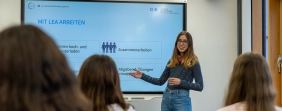Notwendige Cookies helfen, eine Website nutzbar zu machen, indem sie grundlegende Funktionen wie die Seitennavigation und den Zugang zu sicheren Bereichen der Website ermöglichen. Ohne diese Cookies kann die Website nicht ordnungsgemäß funktionieren.
Präferenz-Cookies ermöglichen es einer Website, sich Informationen zu merken, die das Verhalten oder Aussehen der Website verändern, wie z.B. Ihre bevorzugte Sprache oder die Region, in der Sie sich befinden.
Marketing-Cookies werden verwendet, um Besucher über die Websites hinweg zu verfolgen. Die Absicht ist es, Anzeigen anzuzeigen, die für den einzelnen Benutzer relevant und ansprechend sind und dadurch für Publisher und Drittwerber wertvoller sind.
Auf unserer Webseite binden wir unter Umständen auch Dienste von Drittanbietern wie beispielsweise Google, YouTube, Vimeo oder Facebook ein. Die Daten werden mittels Cookies oder ähnlicher Technologien erfasst und an Dritte übermittelt, welche ihre Dienste eigenverantwortlich erbringen.



 mwinzk3m
mwinzk3m
0 Kommentare
Es gibt noch keine Kommentare. Fügen Sie einen Kommentar hinzu.